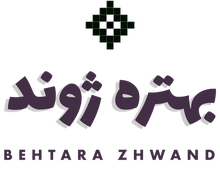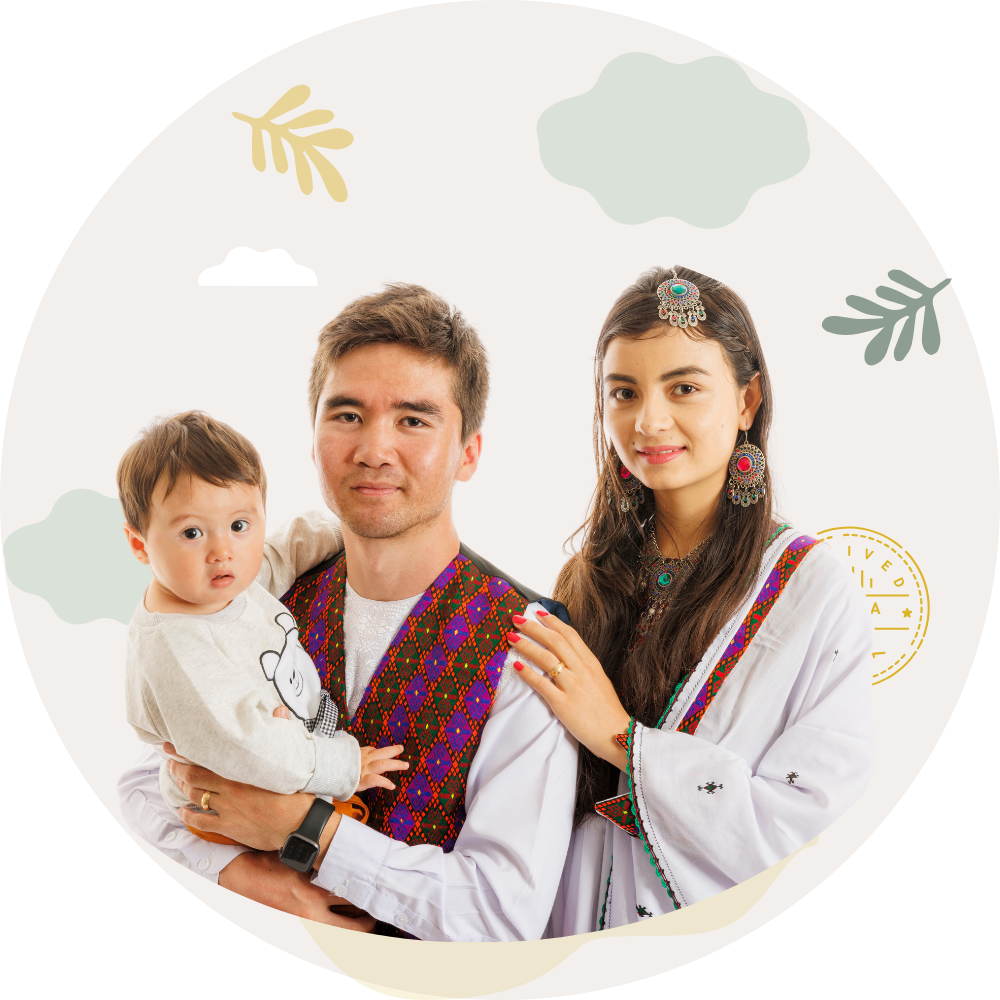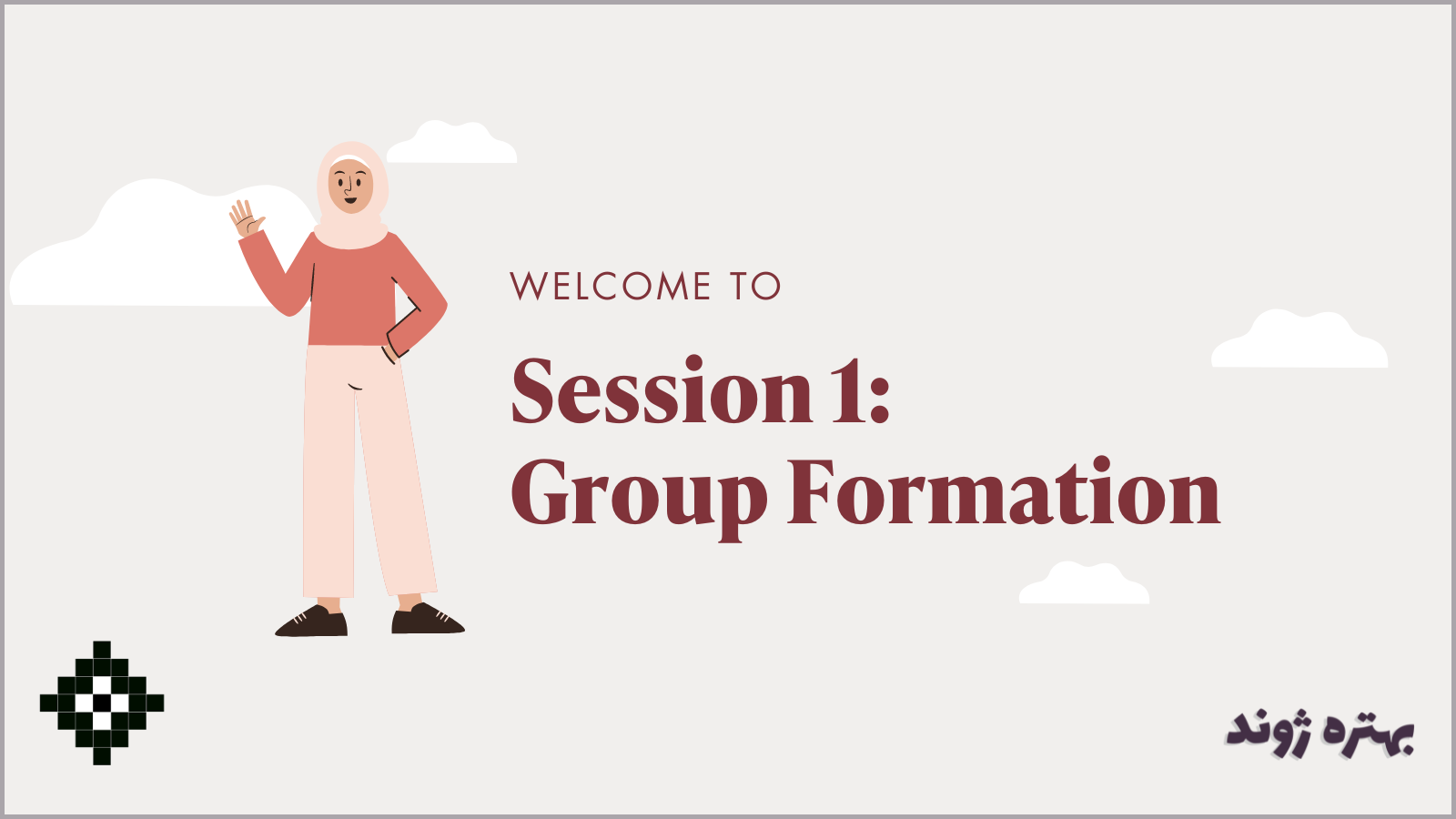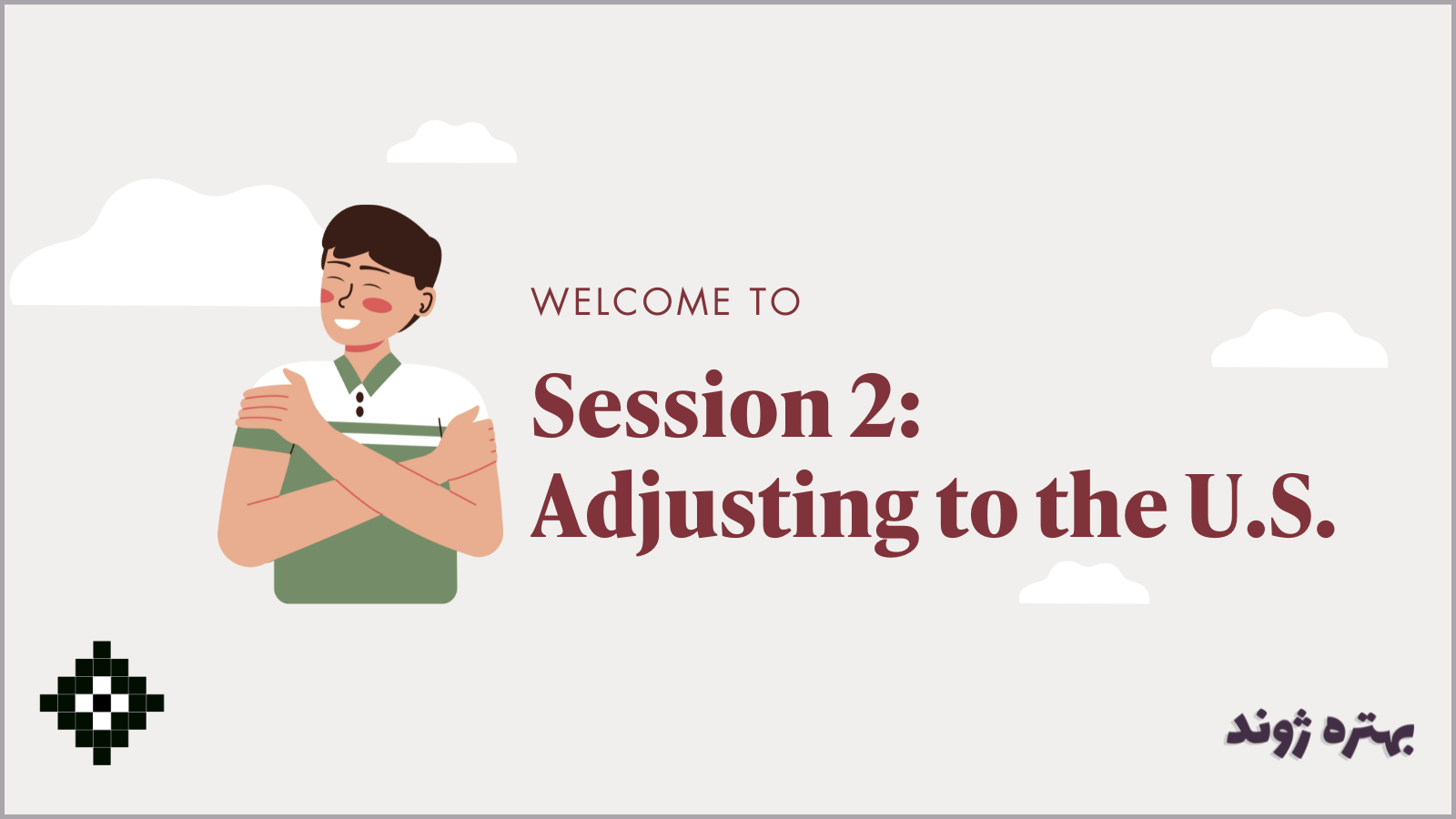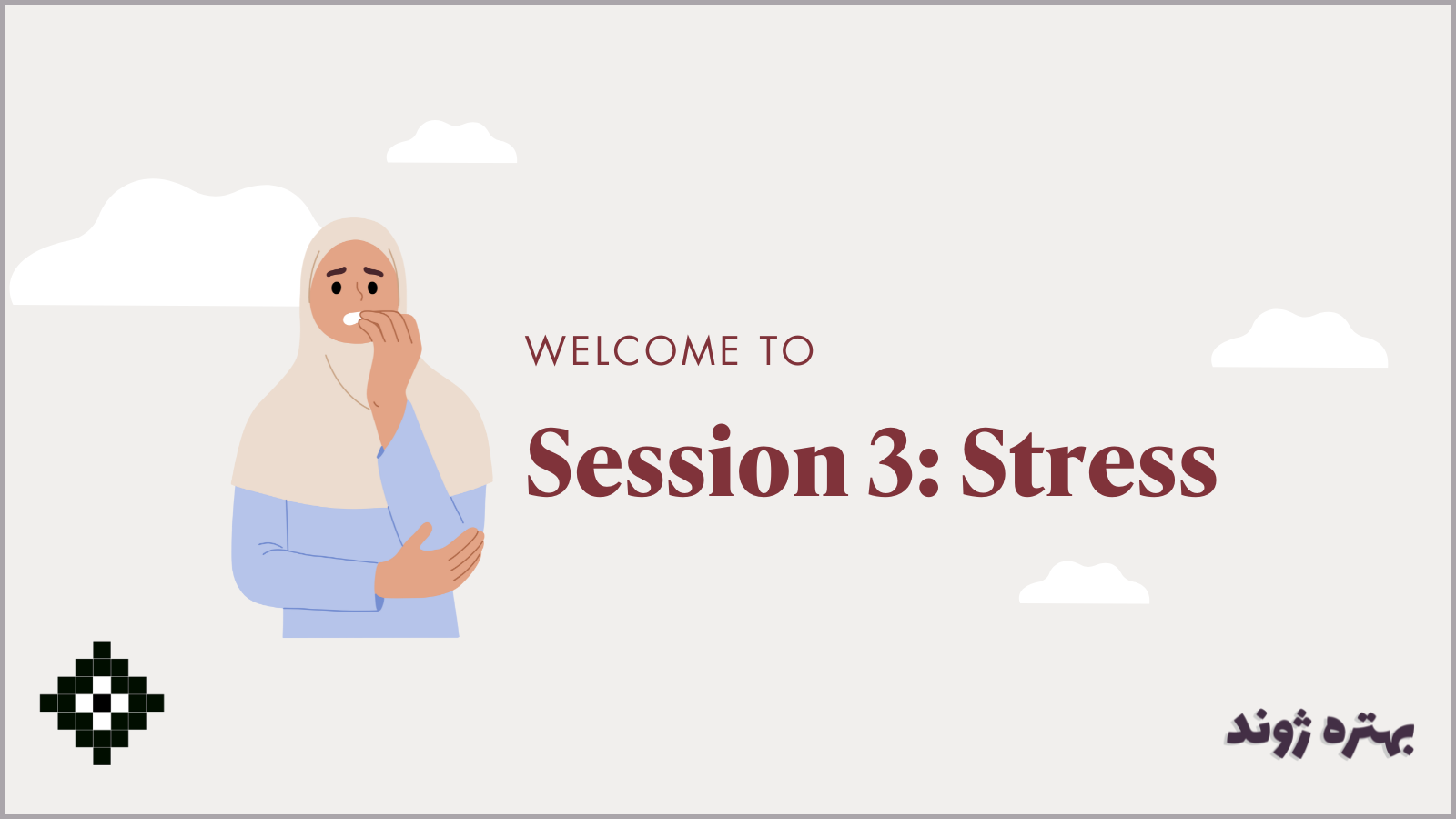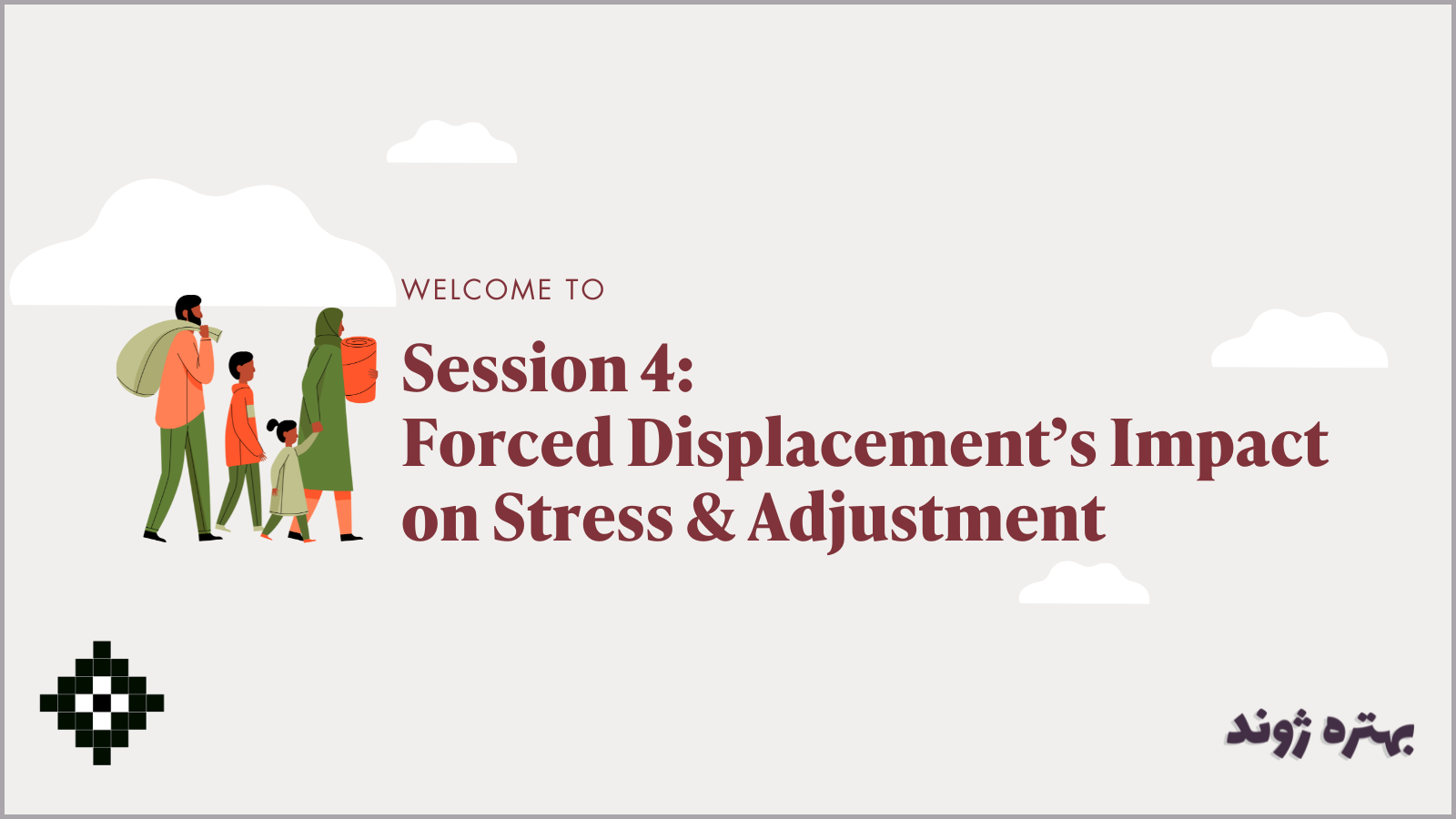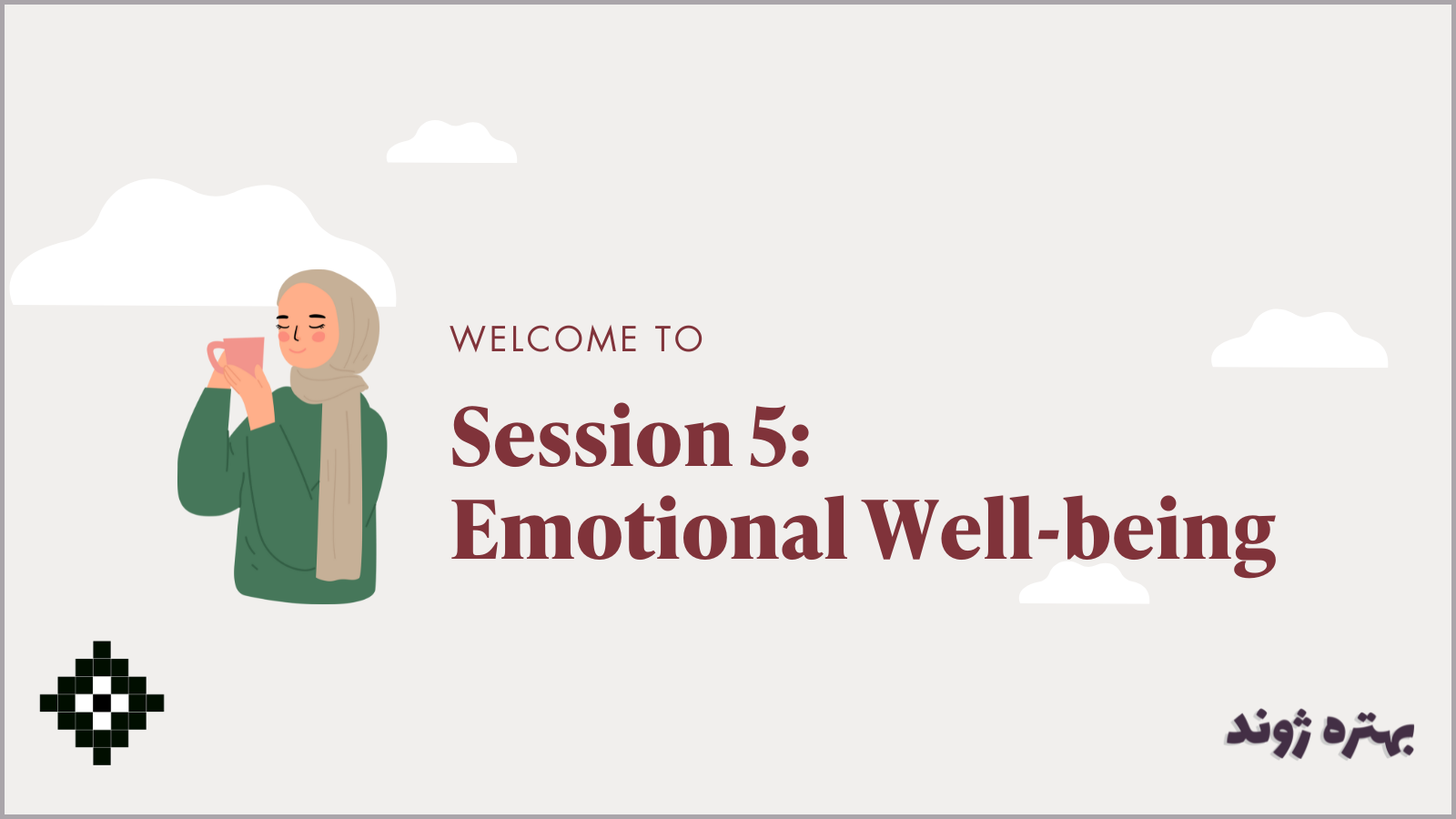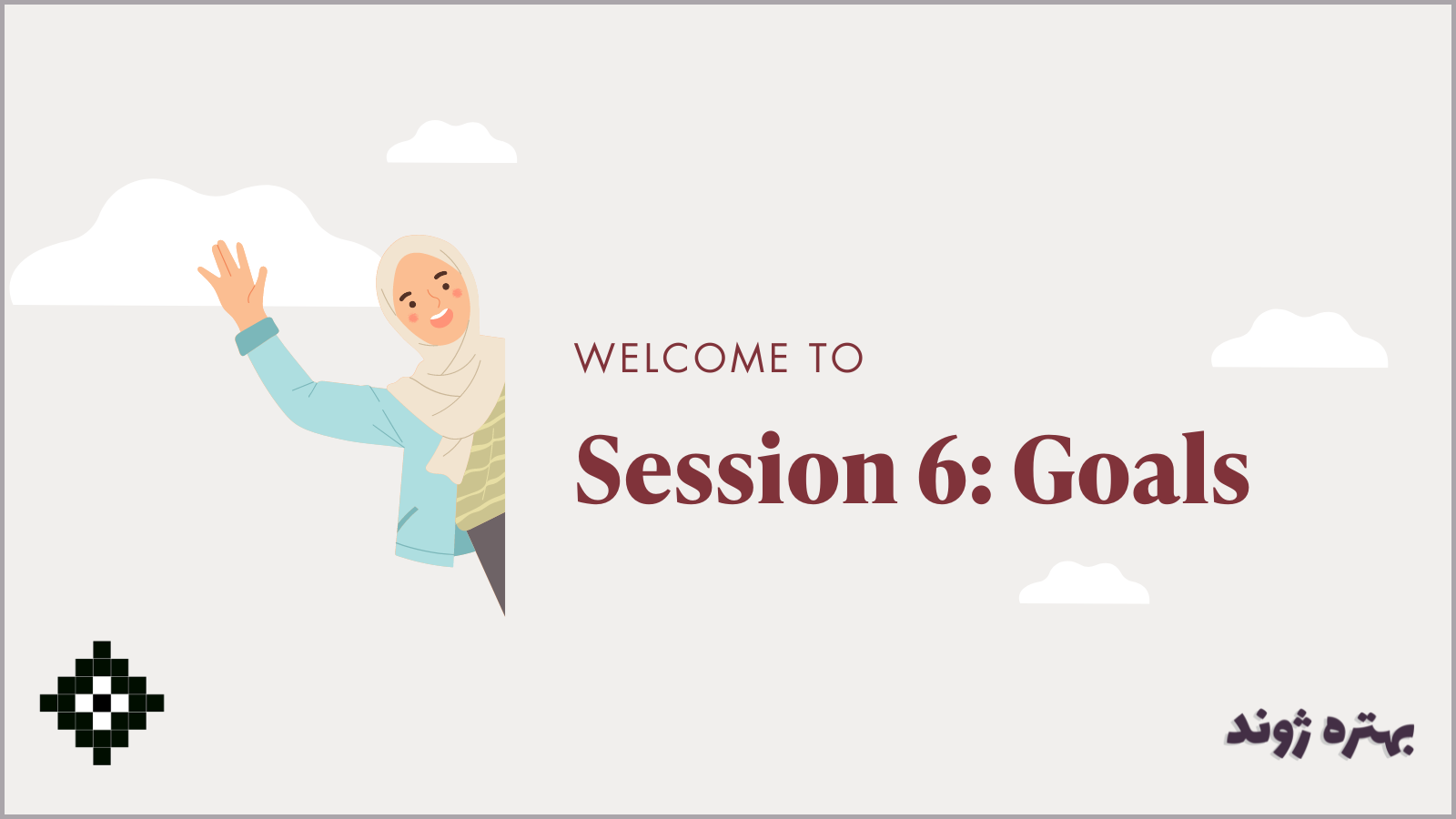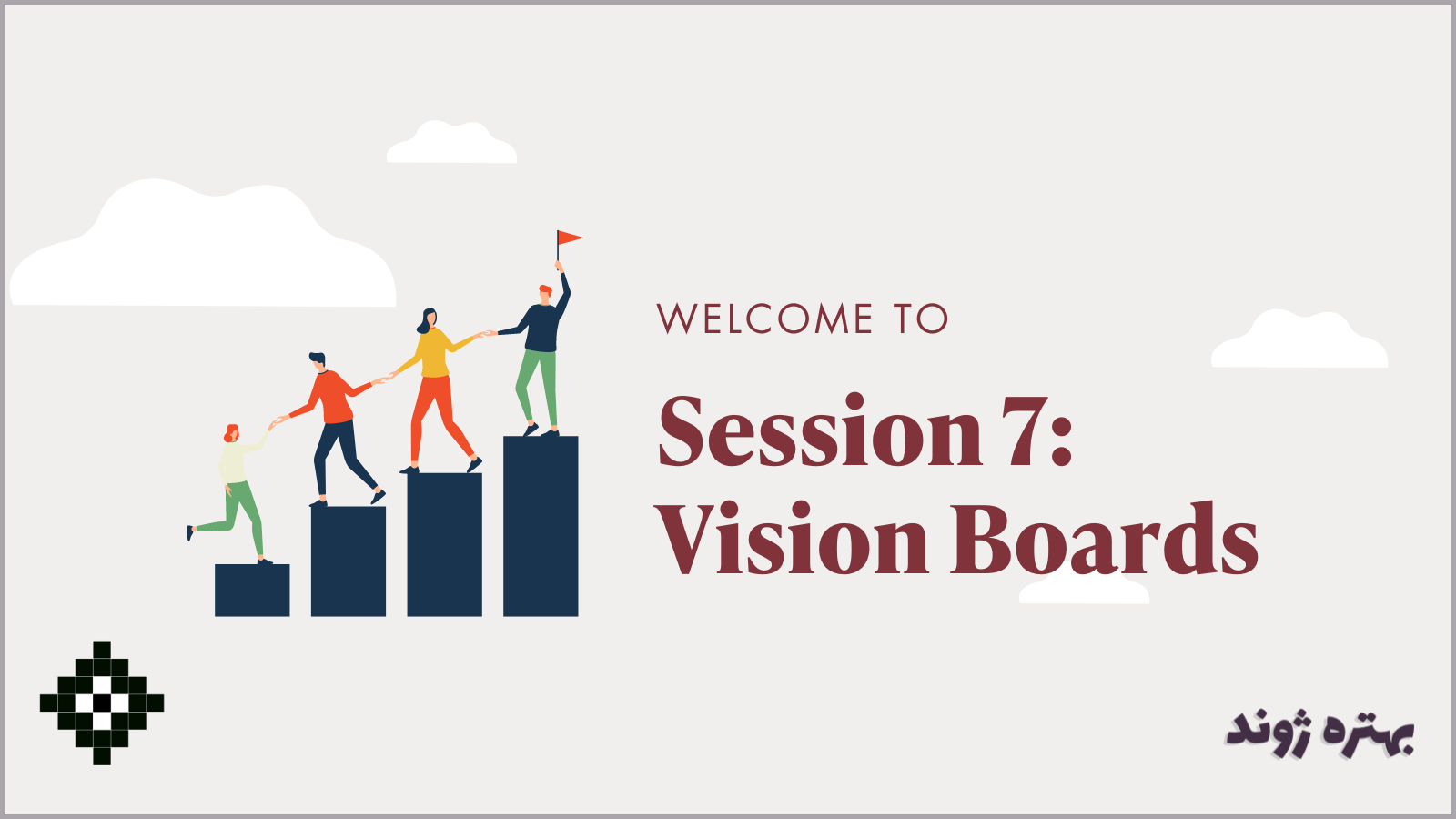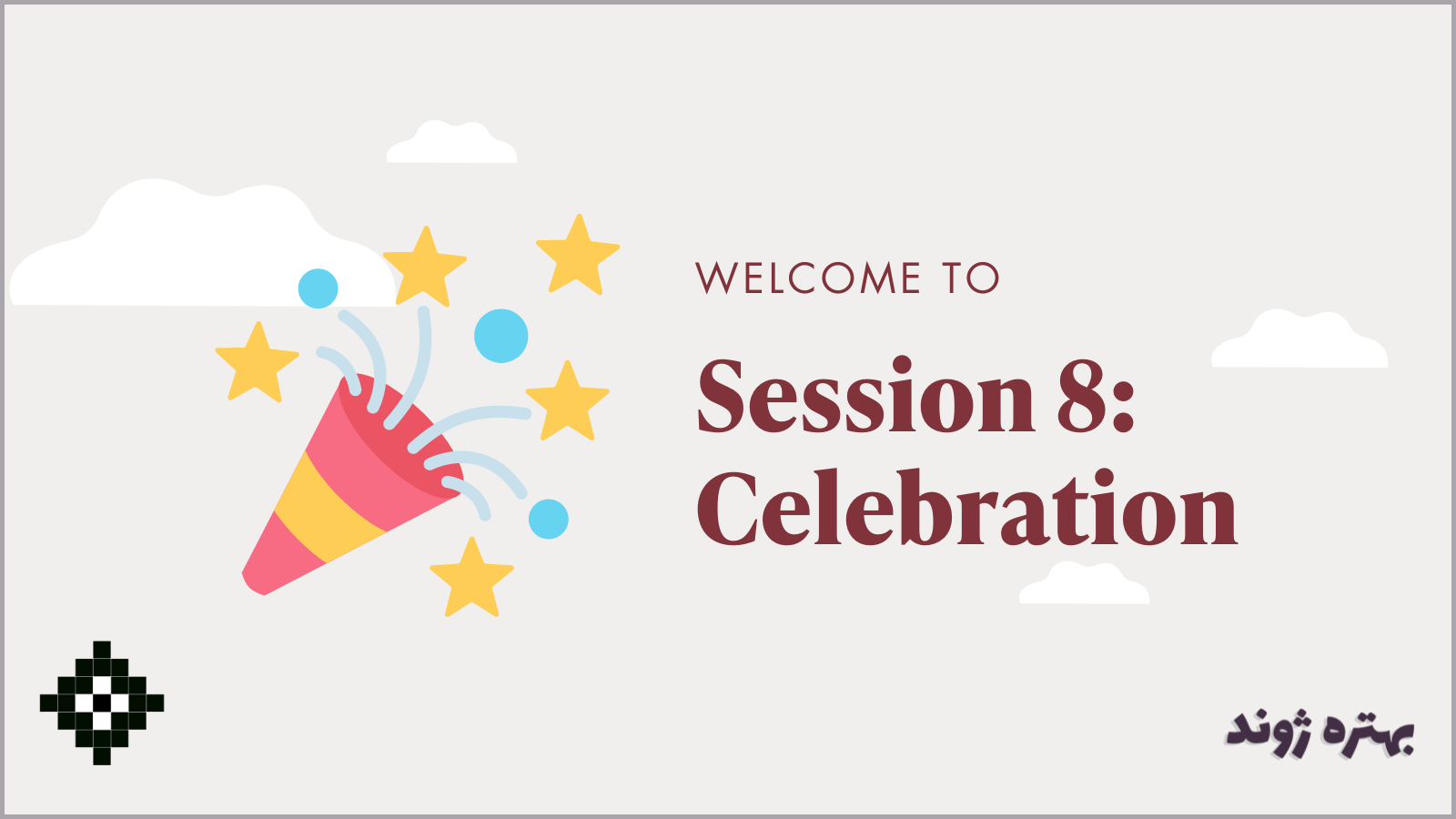Leading the Support Group
Service providers working with Afghan newcomers can use "Behtara Zhwand" as a comprehensive resource to support their clients' resettlement journey. The page offers an 8-session curriculum designed to help Afghan newcomers build resilience, connect with their community, and manage the emotional and practical challenges of resettlement. Each session includes guided discussions, relaxation exercises, and culturally relevant activities tailored to the unique needs of Afghan newcomers. Providers can use this curriculum to facilitate group sessions that foster a sense of belonging and empower newcomers to navigate life in the U.S. effectively.
The pre-session is designed to ensure that participants understand the purpose of the Afghan Adjustment Support Group and agree to participate. During this session, staff will address any barriers to participation and administer the pre-survey. This session is typically delivered over the phone.
The pre-session should take place approximately two weeks before the group starts so there is sufficient time to overcome any barriers to participation.
After this session, participants will:
- Understand the goals of the Behtara Zhwand curriculum the types of activities, how long the group will meet and for what period of time
- Have barriers to participation addressed:
- Transportation to get to the sessions, if group is in person
- Childcare as needed and appropriate, if group is in person
- Hardware and internet connection, if group is remote
- Basic digital literacy skills to participate in the session, if group is remote
Pre-session
The staff person should introduce themselves to potential participants and let them know why they are reaching out. The staff should remind participants of the purpose of the group, reinforcing its voluntary nature and the subject matter that will be covered.
- If the participant is no longer interested in participating, you can ask them if they have concerns about participating that you might be able to address. However, if it is clear they do not want to participate you should thank them for their time and end the call.
- If the participant says they would like to participate, explore any barriers to participation.
Whether the staff continues or arranges another time, the following interaction should address any barriers to participation.
If numbers are low, staff can also use this time to encourage participants to recruit a friend.
Pre-Survey
Staff should do the pre-survey next. If the participant does not want to take the survey, you can ask them if they have concerns about participating that you might be able to address. However, if it is clear they do not want to participate you should thank them for their time and end the call.
If the participant says yes, ask the pre-survey questions and document responses.
The first lesson is designed to create a shared understanding of the group's purpose, increase trust among group members, and establish ground rules that all participants agree to abide by. Participants also will be introduced to a breathing exercise designed to help calm the body.
After this lesson, participants will:
- Get to know other group members and start the process of forming social connections
- Agree on group rules to increase trust and a sense of safety in the group
- Learn and practice a breathing relaxation exercise
Introductions (10-15 minutes)
Facilitators should welcome the participants warmly, introduce themselves, and restate the group's purpose.
Facilitators should have participants introduce themselves by first name, say how long they have been in the U.S., and provide one fun fact about themselves. They should model this for clients even though they have already introduced themselves.
Purpose of the Group (10 -15 minutes)
Facilitators should reiterate the purpose of the group.
Group Agreements (20 minutes)
For the group to be a trusted and safe space, there needs to be some group agreements. Ideally, most of these are proposed by group members so there is shared agreement and ownership. However, at a minimum, confidentiality and respect should be included.
Facilitators should begin the discussion by explaining the purpose of the group agreements and then offering one or two examples as illustrations before soliciting additional suggestions. If in-person, facilitators can write these on a Whiteboard or Flip Chart, or if online, on an online Whiteboard. However, facilitators should be careful to always read out loud what is written, ideally repeating it several times, to ensure that these suggestions are also accessible to those who may have low literacy.
Getting to Know Each Other (15 minutes)
The facilitator will have clients do a fun and light icebreaker exercise called “This or That”. “This or That” is an easy and fun exercise to do particularly with remote presentations and it offers infinite variations that can be customized and culturally tailored to the audience. Facilitators will show visuals of two things and participants are asked if they would prefer “This” (one visual) or “That” (the other visual). The facilitator can also ask people why to prompt further discussion. For example, a facilitator may show a picture of two popular singers and say, “Who do you prefer - This or That?”
- The Toolkit contains slides for the This or That icebreaker, but facilitators are encouraged to change and adapt them as they see fit. Some examples of This or That include:
- Types of food (i.e., sweet vs. salty, one desert vs. another, one soup vs. another, etc.)
- Famous figures (i.e., famous actors, famous dancers, famous singers, etc.)
- Perfect vacation (i.e., beach vs. mountains, theme park vs. reading)
Relaxation Exercise (10 minutes)
Facilitators will lead participants in a relaxation exercise called Self-Hug, which helps relax muscles and encourages deep breathing. This helps calm the nervous system. Participants will start every future session with the previous session’s relaxation exercise and introduce a new relaxation exercise at the end of the session. This is also the facilitators’ first opportunity to touch on stress and coping, which will be focused on more deeply in future sessions. Facilitators may want to encourage participants to turn off their cameras, so they feel more comfortable. [Note: facilitators are free to substitute another relaxation exercise for Self-Hug.]
Closing (5 minutes)
Facilitators should thank participants for being a part of the group and ask them if they had any reflections on the first session. Facilitators should then reiterate the days and times the group will meet, its voluntary nature, and expectations for attendance.
The second session allows participants to reflect on the challenges and opportunities of coming to a new country and normalize the ups and downs of adjustment.
After this lesson, participants will:
- Understand the common feelings related to adjustment
- Be able to identify aspects of Afghan and U.S. culture that they can utilize to ease adjustment
- Learn and practice a relaxation exercise
Introductions (5-10 minutes)
Facilitators should welcome the participants warmly and if there are any new members. If so, the facilitators and participants should introduce themselves.
Relaxation Exercise (5 minutes)
Facilitators will briefly review the relaxation exercise from last week's Self-Hug.
Icebreaker (10 minutes)
The facilitator will do an icebreaker called ‘Favorites,’ which allows participants to share non-sensitive personal information that generally invokes positive experiences or memories. Facilitators should ask participants to share their favorite something. For example, favorite movie, food, season, color, etc.
If facilitators want to allow for more time and discussion, they can add the question why. For example, “Favorite season and why.”
Adjusting to the U.S. (30-40 minutes)
This session explains what adjustment is and common reactions to the challenges of coming to the U.S. The facilitator also explores with participants possible opportunities presented by coming to the U.S. and how adjustment can mean changing and needing to combine elements of both the Afghan and U.S. cultures. Facilitators should provide lots of opportunities for participants to discuss and explore with each other.
Relaxation Exercise (10 minutes)
Facilitators will lead participants in a relaxation exercise called Swaying Tree, which helps calm the nervous system. Facilitators may want to encourage participants to turn off their cameras so they feel more comfortable. Facilitators can also add calm music to this exercise, including audio sounds of a gentle wind. [Note: facilitators are free to substitute another relaxation exercise for Swaying Tree.]
Closing (5 minutes)
Facilitators should thank participants for being a part of the group and ask them if they had any reflections on the session.
Facilitators should then reiterate the next day and time the group will meet.
The third session is designed to help participants understand what stress is and how it can impact their thoughts, emotions, actions, and overall well-being. Participants will identify coping skills that they can use to help manage stress and be encouraged to use these daily.
After this lesson, participants will:
- Understand better their physiological reactions to stress
- Understand why coping is helpful in managing stress
- Begin to identify personal coping strategies
- Learn and practice a relaxation exercise
Introduction (5-10 minutes)
Facilitators should welcome the participants warmly and if there are any new members. If so, the facilitators and participants should introduce themselves.
Relaxation Exercise (5 minutes)
Facilitators will briefly review the relaxation exercise from last week’s Swaying Tree.
Icebreaker (10 minutes)
Facilitators will utilize the icebreaker “Looking forward to,” which supports participants' future orientation while allowing them to share more about their day-to-day lives or family. Facilitators will ask participants about something they are looking forward to.
Facilitators can also ask the participants ‘why’ if they have more time.
The Psychological Response to Stress (20-30 minutes)
The facilitator will make the connection between stress and adjustment and go more in-depth into the physiological changes that take place because of stress. Participants will also have an opportunity to reflect on their own physiological reactions to stress.
Introduction to Coping (10-15 minutes)
The facilitator will introduce the concept of coping while encouraging participants to identify their own coping strategies and practice coping skills every day.
Relaxation Exercise (5 minutes)
Facilitators will lead participants in a relaxation exercise that uses visualization called Beautiful Garden. Facilitators may want to encourage participants to turn off their cameras so they feel more comfortable. [Note: facilitators are free to substitute another relaxation exercise for Beautiful Garden.]
Closing (5 minutes)
Facilitators should thank participants for being a part of the group and ask them if they had any reflections on the session.
Facilitators should then reiterate the next day and time the group will meet.
The fourth session is designed to help participants understand what may have happened that caused them to leave their country, the journey to the U.S., and how adjusting to the U.S. can contribute to stress. While these issues have been touched on before, this session is designed to tie them together and prepare participants for the fifth session, which focuses more on mental health.
After this lesson, participants will:
- Understand what is meant by a ‘traumatic experience’ and how it impacts someone physically and emotionally
- Understanding why traumatic experiences can make it more likely for someone to experience stress and adjust to life in the U.S. more difficult.
- Learn and practice a relaxation exercise.
Introductions (5-10 minutes)
Facilitators should welcome the participants warmly and if there are any new members. If so, the facilitators and participants should introduce themselves.
Relaxation Exercise (10 minutes)
Facilitators will briefly review the visualization exercise from last week, Beautiful Garden.
Icebreaker (10 minutes)
Facilitators will do a brief icebreaker called “Would You Rather,” which presents two light and often silly scenarios and asks participants to choose between them. Possible scenarios are available for download, but facilitators are encouraged to adapt or use their own.
Checking In (10 minutes)
The facilitator will revisit coping skills and see if participants had a chance to use them over the previous week.
Forced Displacement, Stress, and Adjustment (30 minutes)
The facilitator will discuss forced displacement and how this can sometimes make people prone to more stress and impede adjustment. The goal is to normalize the complex emotions that come from the difficult forced displacement experience. While facilitators want to encourage discussion, it is important they steer discussions in such a way that people are not sharing violent or sensitive traumatic experiences, as this may be retraumatizing to other group members.
Relaxation Exercise (10 minutes)
Facilitators will lead participants in a stress reduction and relaxation exercise called “Stress Blow Out.” Facilitators may want to encourage participants to turn off their cameras, so they feel more comfortable. [Note: facilitators are free to substitute another relaxation exercise for Stress Blow Out.]
Closing (5 minutes)
Facilitators should thank participants for being a part of the group and ask them if they had any reflections on the session.
Facilitators should then reiterate the next day and time the group will meet.
The fifth session is designed to help participants understand how mental health is talked about in the U.S. and to be able to identify different ways that people can take care of their mental health. Because of stigma related to the concept of mental health, the term ‘emotional well-being’ is going to primarily be used.
After this lesson, participants will:
- Understand what the term ‘mental health’ means in the U.S.
- Recognize the many ways people can take care of their emotional well-being
- Be able to recognize when professional assistance may be needed for a mental health issue
- Learn and practice a relaxation exercise
Introductions (5-10 minutes)
Facilitators should welcome the participants warmly and if there are any new members. If so, the facilitators and participants should introduce themselves.
Relaxation Exercise (5 minutes)
Facilitators will briefly review the visualization exercise from last week, Stress Blow out.
Icebreaker (20 minutes)
Facilitators will lead participants in an exercise of Rose, Bud, and Thorn. This exercise helps people focus on and revisit positive moments and experiences, things they are looking forward to, and difficult things that may have happened. Because Afghanistan remains in a protracted conflict situation, it is important the facilitator frame the “Thorn” as a specific way to ensure people are not sharing traumatic or overly distressing events that may re-traumatize people.
Emotional Well-Being (30 minutes)
The facilitator will discuss emotional well-being and crosswalk it to what is meant by the term ‘mental health’ in the U.S. This is done to help create a shared understanding of the term ‘mental health’ and to provide a foundation for destigmatization.
Relaxation Exercise (10 minutes)
Facilitators will lead participants in a stress reduction and relaxation exercise called “Tea Time.” Facilitators may want to encourage participants to turn off their cameras, so they feel more
comfortable. [Note: facilitators are free to substitute another relaxation exercise for Tea Time.]
Closing (5 minutes)
Facilitators should thank participants for being a part of the group and ask them if they had any reflections on the session.
Facilitators should then reiterate the next day and time the group will meet.
The sixth session helps participants understand that adjustment is a long-term process with many small steps. Participants will think about goals that they want for themselves and their families, including adjustment goals. This helps encourage future orientation, which has been shown to be a protective factor in mental health. Participants will also break down goals into small parts so that they can be realistic about timeframes and feel a sense of achievement as they achieve small goals that contribute to a larger goal. At the end of the session, participants will be encouraged to create a Vision Board, which they will present in session 7.
After this lesson, participants will:
- Understand different types of goals
- Be able to break goals down into small, achievable pieces
- Begin thinking about goals they want for themselves and their family
- Learn and practice a relaxation exercise
Introductions (5-10 minutes)
Facilitators should welcome the participants warmly and if there are any new members. If so, the facilitators and participants should introduce themselves.
Relaxation Exercise (5 minutes)
Facilitators will briefly review the visualization exercise from last week, Tea Time.
Icebreaker (10 minutes)
Facilitators will lead participants in answering questions in the icebreaker, “Learn, Go, Try.”
Setting Goals (20 minutes)
The facilitator will build on past conversations about adjustment and emotional well-being to encourage participants to engage in a hopeful vision of the future. This will include talking about goals, the different types of goals, and how breaking goals into small parts can be helpful in feeling successful.
Vision Board Assignment (10 minutes)
Facilitators will give clients a homework assignment to create a vision board with some of their goals for the future, as well as hopes and dreams. If the session is in person, the facilitator will give each participant a vision board kit, which will include culturally appropriate pictures, printouts, magazine pages, paper to put the vision board on, a glue stick, and scissors. If the sessions are online, facilitators should let participants know materials for the vision board will be mailed to their home or dropped off at their home or can use the Vision Board Template. Participants can also be encouraged to add to any materials with their own printouts, pictures, or drawings.
Relaxation Exercise (10 minutes)
Facilitators will lead participants in a simple breathing exercise called “Belly Breathing.” Facilitators may want to encourage participants to turn off their cameras, so they feel more comfortable [Note: facilitators are free to substitute another relaxation exercise for Belly Breathing.]
Closing (5 minutes)
Facilitators should thank participants for being a part of the group and ask them if they had any reflections on the session.
Facilitators should then reiterate that participants should create their vision board over the next week and bring it to the next session. Facilitators should remind participants of the next day and time the group will meet.
The seventh session is a highly interactive session where facilitators encourage each participant to share their vision boards. Each participant will be encouraged to identify at least one goal on their vision board and any steps they need to take to reach that goal. Participants will have an opportunity to reflect on what they have learned in the group while looking forward to the final session, which is a celebration.
After this lesson, participants will:
- Have identified a goal
- Be able to identify small steps in reaching that goal
- Learn and practice a relaxation exercise
Introductions (5-10 minutes)
Facilitators should welcome the participants warmly and if there are any new members. If so, the facilitators and participants should introduce themselves.
Relaxation Exercise (5 minutes)
Facilitators will briefly review the visualization exercise from last week, Belly Breathing.
Sharing Vision Boards (50 minutes)
The facilitator will encourage each participant to share their vision board with the group. Participants should be encouraged to ask each other questions. Facilitators should provide encouragement and positive feedback on each vision board.
Reflections and Planning for the Last Session (15 minutes)
Facilitators will remind people that this is the last session before a celebration. Facilitators will ask participants to share what they like about the group, what they learned, what they didn’t like, and what they would change. If there are any logistics or planning that need to be done before the final session, the facilitator can do that now.
Relaxation Exercise (10 minutes)
Facilitators will return to the first relaxation exercise, “Self-Hug.”
Closing (5 minutes)
Facilitators should thank participants for being a part of the group and ask them if they had any reflections on the session.
Facilitators should then reiterate any logistics about the final session.
The eighth and last session is a celebration of what participants have learned and their time together. Each participant will receive an individual certificate, and the facilitator(s) should state something positive about each participant. At the end of the session, participants can be encouraged to exchange information and stay in touch with each other.
Introductions (20-30 minutes)
Facilitators should welcome the participants warmly. If participants have brought their family members, the facilitator(s) should introduce themselves and state their role. Participants should be encouraged to introduce themselves and their family members.
Relaxation Exercise (10 minutes)
Facilitators will lead the whole group in a relaxation exercise. Ideally, this exercise will have been chosen by the participants in the last session. If not, the facilitator can choose an exercise or call for suggestions from participants. They can also ask if any participant wants to lead the exercise.
Certificates (20 minutes)
The facilitator will call each person’s name and give them a certificate while also verbalizing something they enjoyed, appreciated, or learned from the participant.
Closing (5 minutes)
Facilitators should thank participants for being a part of the group and encourage them to stay in touch. Facilitators should also let participants know someone will be calling them in the next one to two weeks to do a final survey. If participants receive an incentive for doing the final survey, this should be mentioned.
One to two weeks after the last Behtara Zhwand celebratory session, call participants to complete the Behtara Zhwand post-survey. Staff should thank participants for attending the group and remind participants of the purpose of the post-survey, reinforcing the voluntary nature of the survey and how results will be used.
If the participant says no, you can ask them if they have concerns about participating that you might be able to address. However, if it is clear they do not want to participate, you should thank them for their time and end the call.
If the participant says yes, ask the post-survey questions and document responses.

